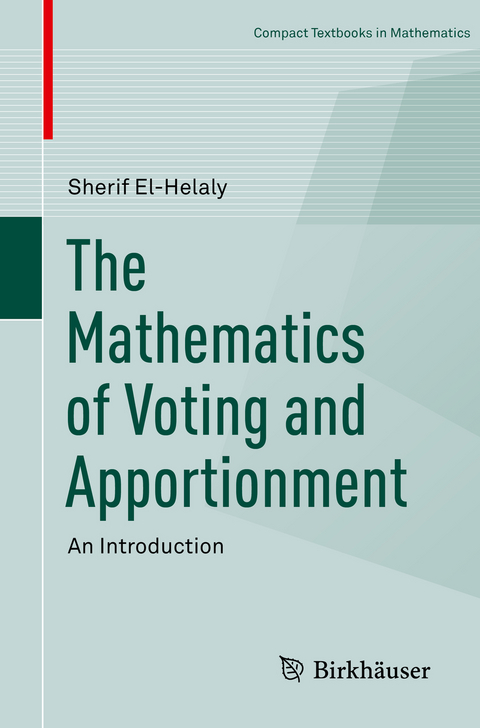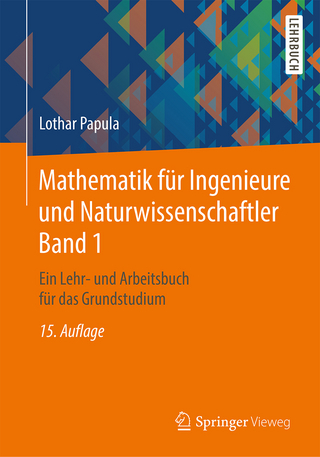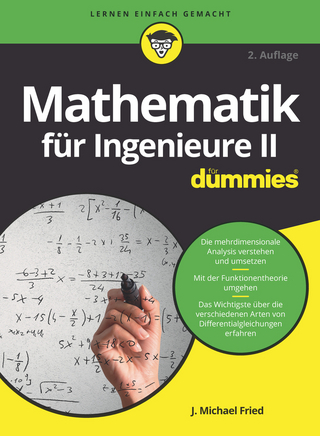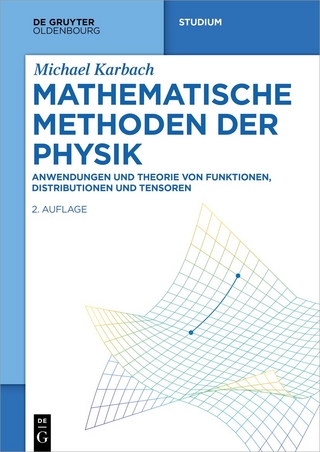
The Mathematics of Voting and Apportionment
Springer International Publishing (Verlag)
978-3-030-14767-9 (ISBN)
The text's three chapters cover social choice, yes-no voting, and apportionment, respectively, and can be covered in any order, allowing teachers ample flexibility. Each chapter begins with an elementary introduction and several examples to motivate the concepts and to gradually lead to more advanced material. Landmark theorems are presented with detailed and streamlined proofs; those requiring more complex proofs, such as Arrow's theorems on dictatorship, Gibbard's theorem on oligarchy, and Gärdenfors' theorem on manipulation, are broken down into propositions and lemmas in order to make them easier to grasp. Simple and intuitive notations are emphasized over non-standard, overly complicated symbols. Additionally, each chapter ends with exercises that vary from computational to "prove or disprove" types.
The Mathematics of Voting and Apportionment will be particularly well-suited for a course in the mathematics of voting and apportionment for upper-level undergraduate and beginning graduate students in economics, political science, or philosophy, or for an elective course for math majors. In addition, this book will be a suitable read for to any curious mathematician looking for an exposition to these unpublicized mathematical applications.
No political science prerequisites are needed. Mathematical prerequisites (included in the book) are minimal: elementary concepts in combinatorics, graph theory, order relations, and the harmonic and geometric means. What is needed most is the level of maturity thatenables the student to think logically, derive results from axioms and hypotheses, and intuitively grasp logical notions such as "contrapositive" and "counterexample."
Sherif El-Helaly is an associate professor at The Catholic University of America in Washington, DC, where he has been teaching a course on mathematical topics in the social sciences for twenty years.
Chapter 1: Social Choice.- Introduction.- Elimination Procedures.- Condorcet Ideas and Related Procedures.- Scoring Procedures: Borda Count.- A Glimpse into Social Welfare Theory.- Social Choice Procedures: Indifference and Ties Allowed.- Manipulability of Social Choice Procedures: Indifference and Ties Allowed.- Exercises.- Chapter 2: Yes-No Voting.- Introduction.- Quantification of Power in a Yes-No Voting System.- Some Combinatorics.- Banzhaf and Shapley-Shubik Indices in One View.- Weightable Yes-No Voting Systems.- Exercises.- Chapter 3: Apportionment.- Introduction.- Axioms of Apportionment.- Quota Procedures.- Divisor Procedures.- Equity Criteria.- Apportionment Paradoxes.- Applications of Priority Formulas.- Exercises.
"As intended audience the author mentions students in economics, political science, philosophy and (applied) mathematics, but I think the book is also to be recommended to law students ... . I like to suggest to include this topic in a next edition of this admirable book." (H. C. M. de Swart, zbMATH 1426.91001, 2020)
"This is a nicely written book, with clear explanations that are supported by a number of useful, fully worked out, examples. ... more appropriate audience would be math majors in a proof-based course who already have some experience in reading precisely stated definitions and statements of theorems, and a willingness to track through the details of a proof." (Mark Hunacek, MAA Reviews, August 11, 2019)
"This book, is a textbook that is clearly addressing an audience of social science students, in particular in the US ... . It is not only a textbook for his students, but it brings together a lot of material that is not easily found in this compact form and as such it will be of interest to any politician or anyone who is generally interested in the subject." (Adhemar Bultheel, European Mathematical Society, euro-math-soc.eu, July 01, 2019)
| Erscheinungsdatum | 06.06.2019 |
|---|---|
| Reihe/Serie | Compact Textbooks in Mathematics |
| Zusatzinfo | XV, 264 p. 27 illus., 2 illus. in color. |
| Verlagsort | Cham |
| Sprache | englisch |
| Maße | 155 x 235 mm |
| Gewicht | 479 g |
| Themenwelt | Mathematik / Informatik ► Mathematik ► Angewandte Mathematik |
| Schlagworte | Alabama Paradox • apportionment • Arrow's Impossibility Theorem • Borda Count • Condorcet Winner Criterion • Hare Quota • Mathematics of Voting • Social Choice • Yes-No Voting |
| ISBN-10 | 3-030-14767-3 / 3030147673 |
| ISBN-13 | 978-3-030-14767-9 / 9783030147679 |
| Zustand | Neuware |
| Haben Sie eine Frage zum Produkt? |
aus dem Bereich


